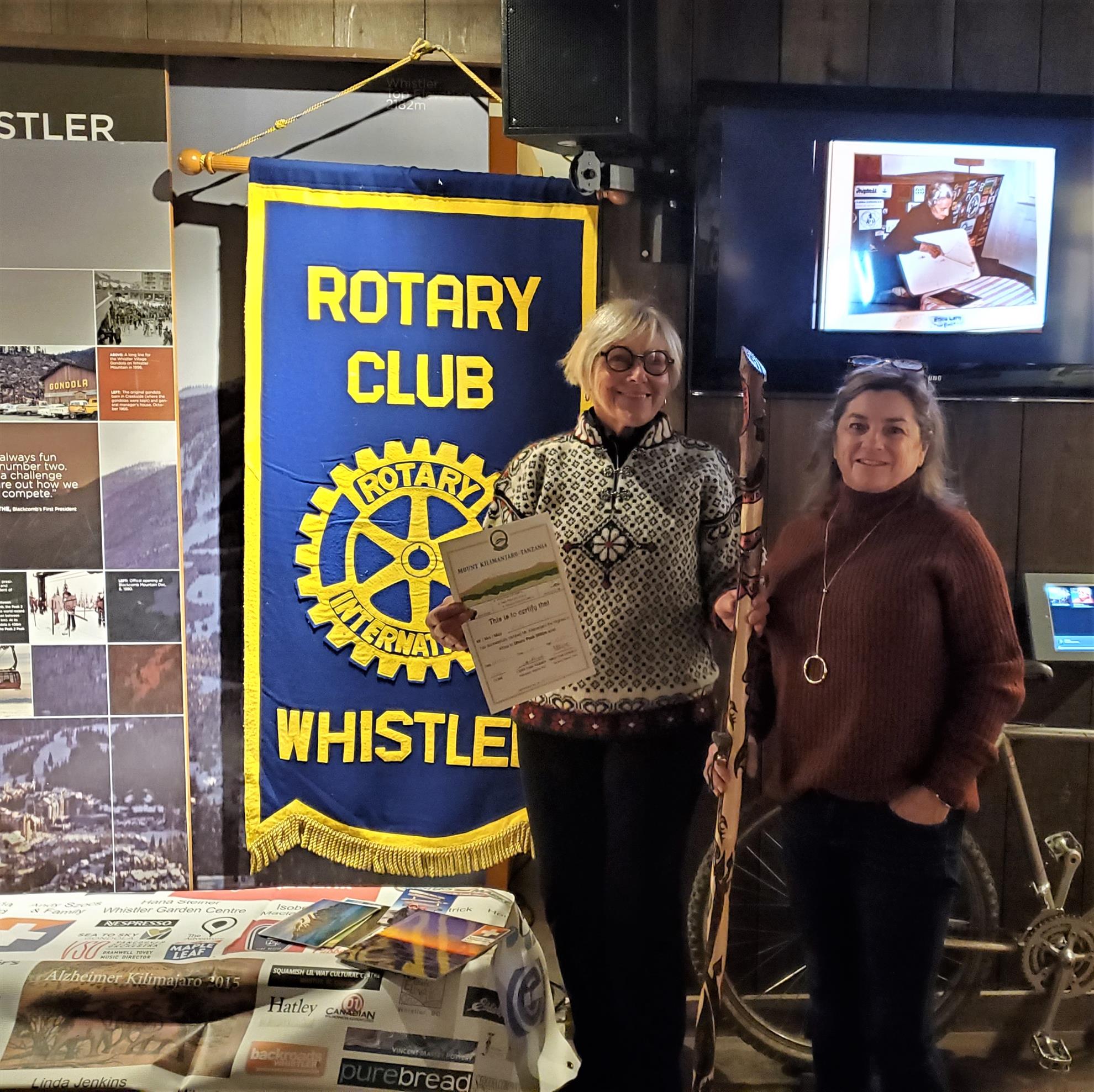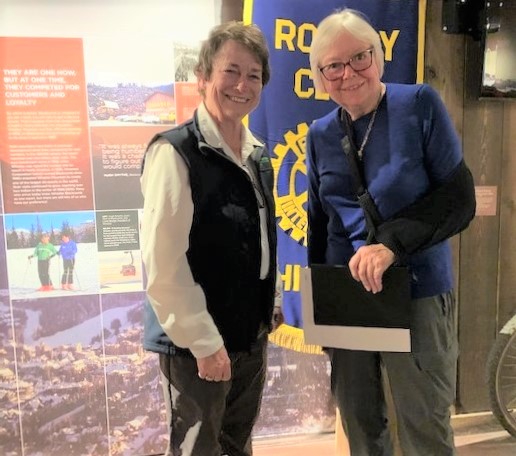
Our own Rotarian from Whistler. Erika Durlacher told her story of the the September 28 2015 Kilimanjaro climb of 5895 metres or 19,341 feet with her daughter her daughter and friend Abbie Milavsky. This was an amazing sojourn, the magnitude of which many of us may never experience. They climbed through the eclipse of the super moon, altitude sickness, freezing temperatures, carrying backpacks and stumbling slowly as they ascended the world’s highest freestanding mountain and the highest mountain in Africa. Thankfully the temperature did not go below -20 as expected.
We had the great privilege to welcome the Hon. Diane Griffin, Canadian Senator for the province of PEI at our January 22, Tuesday evening at the Whistler Museum. Diane is also a 25-year Rotarian for the Rotary Club of Charlottetown Royalty in PEI. Shown with Senator Griffin is Secretary of the Rotary Club of Whistler Gill Forester.
Diane provided a very informing overview of the “new” Canadian Senate where Senators are now selected by what skills and experience they can offer the Senate, rather than appointed by the Political Party in power, sometimes based on how much money the appointee raised for the party. When a vacancy occurs (mandatory retirement at age 75) a “position opening” is posted, just like in private industry. Any Canadian can apply. The position is still “appointed” by the Prime Minister at the time, however with the intent of appointing the best qualified, regardless of political affiliation.
Current Senators for the most part now independent and can vote with an independent view. There remains a small caucus of Conservator Senators who typically vote along party lines (whipped). Diane described a bill that she proposed, that ultimately was approved by both the House of Commons and the Senate. The bill formally recognized Charlottetown as the birthplace of the Canadian Federation.
Diane also provided a brief update on her Rotary Club (50+ members) and the primary fund raising cause they are working on, having the Dolly Parton Imagination Library, a book provision charity adopted in PEI. The charity provides a book a month for every child from birth to age 6.
